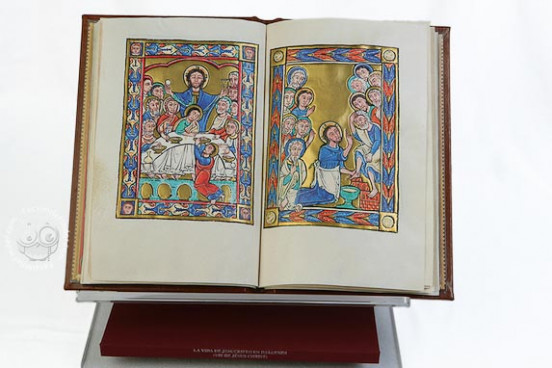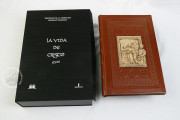The Life of Christ at the Pierpont Morgan Library is a remarkable witness to artistic experimentation in manuscript art during the transition from Romanesque to Gothic style. Presently standing at thirty full-page independent images with no accompanying text, the cycle is the most extensive purely pictorial sequence known in French Romanesque illumination. The state of preservation of the miniatures is excellent, suggesting the manuscript had always been treasured and rarely used. Likely to once have formed prefatory material for a Psalter, the Morgan fragment was rebound as an autonomous work in the eighteenth or nineteenth century in reflection of the tastes of early book dealers.
Long believed to have originated in Limoges, the Life of Christ is now thought to be of north French production, likely from the celebrated scriptorium of Corbie Abbey. The rich decoration suggests that the Psalter may have been intended for a high-ranking recipient.
On the Cusp Between Romanesque and Gothic
The cycle, executed by a single painter, consists of thirty illustrations of the Life of Christ from the Annunciation to Pentecost, the Last Judgment, and the Coronation of the Virgin. Each scene is painted in brilliant colors and heavy outlines on a background of burnished gold, and is framed by a wide border of foliate and geometric motifs.
Self-contained and linear, the miniatures show affinity to other media flourishing at the end of the twelfth century, especially stained glass and enamel. The expansiveness of the sequence calls to mind English Romanesque manuscripts, yet the style of the miniatures has much in common with illumination at Corbie Abbey between 1170 and 1180, such as a copy of the Jewish Antiquities of Josephus Flavius (BnF, lat. MS 16730).
Several iconographic choices, such as the treatment of the Last Supper with Christ elevating the Host and chalice, or the inclusion of the Coronation of the Virgin, reflect devotional and artistic trends in France around the year 1200.
A Collector’s Item
While the earlier history of the manuscript is unknown, its modern pedigree is illustrious. It was owned by celebrated French historian Henri Martin before passing into the collection of the Comte Auguste de Bastard d'Estang, an officer of the Napoleonic army turned collector and historian, who included the manuscript in his groundbreaking Peinture et ornements des manuscrits classés par ordre chronologique (1832–1869) and published a lithographic facsimile of the work.
Later the manuscript joined the library of Ambroise Firmin-Didot, was sold to Adolphe Labitte in 1879, was offered in a catalog of Bernard Quaritch in 1896, and in a catalog of Richard Bennett in 1900. It was acquired by John Pierpont Morgan with the Bennett Collection in 1902.
We have 1 facsimile edition of the manuscript "Life of Christ": La vida de Jesucristo en imágenes facsimile edition, published by Scriptorium, 2005
Request Info / Price

